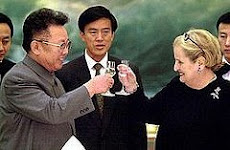On the east side of the capital city of Caracas, Venezuela (where most of the wealthier residents live), stores shut down early and protest bonfires burn in the streets at night. On the west side where many of the poorer people tend to live, schools operate normally and one would hardly notice that the country has been uneasy with weeks of unrest. However, both sides of the city have been confronted with the same kinds of frustrations. Both the poor and the better off are battling one of the world's worst inflation rates, the hours spent in line buying food in short supply, and widespread violent crime. But this month, the protests in the capital have been predominately led by middle and upper-class individuals even though the poor are generally hit the hardest by these struggles. The split personality on both sides "mirrors the deep divide that cleaves this oil-rich nation into supporters and opponents" of the government of Mr. Chavez's successor, Mr. Maduro. Leaders are aware of the disassociation between these two classes that can impact the strength of the protest movement. On the other hand, some of the poor residents actually support the government, but many of those living in the slums have sincere doubts about the government. There is also the issue of those who desire a new political ideology, and feel that the government is protecting their personal interests rather than working to improve the current situation. Therefore, while the conditions are similar, the situation is complicated and people on both sides have responded with various tones.
http://search.proquest.com.libproxy.noctrl.edu/nationalnewsexpanded/docview/1503209221/C9064252EB794398PQ/1?accountid=44854
Amanda Ngo
Subscribe to:
Post Comments (Atom)

No comments:
Post a Comment